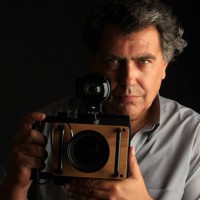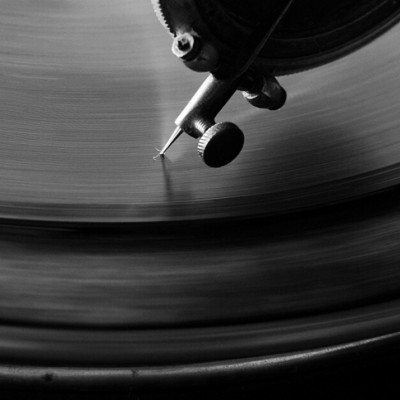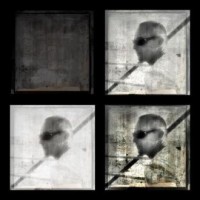SEARCH






|
|
|
|


As an addict of analogue photography, I like to share today, 15 reasons why I can recommend it.
1. With an analogue camera and the classic film roll, you freeze a moment on photosensitive material. It's called “Old school” but becomes trendy again nowadays.
Analogue cameras produce an original negative and you can create an infinite number of prints.
2. Each print developed in the darkroom is unique. It's really difficult to make two similar prints. Other than the results of digital cameras where the results are always identical. That's why you automatically are set to create a unique image.
3. Analogue photography gives you a better dynamic range in all kind of circumstances which are not always possible with DSLR cameras.
4. You also get a lot more depth, details and tonal range. B&W film rolls are beautiful and still available these days. The prints are fabulous and the viewer can notice a deeper intensity of reality.
5. The processing of an analogue photo is already an experience by itself. The feeling is totally different from that of processing a digital image.
6. The process to get a good analogue photo already is a process that automatically requires lots of attention. It starts when you buy the film roll. You have to make a choice according to the light circumstances for the shoot.
7. Developing your film rolls yourself also is an adventure. It is so exciting to see a few minutes after the development if your negatives are successful or not.
8. It is such a wonderful experience to work in a darkroom. The smell of the chemicals, the magic when your photo slowly appears on the paper. You must have experienced it to fully understand it.
9. The beauty of analogue photography is that you almost are forced to study the techniques. You become much more aware of what you are doing. That is so different from work with digital cameras where you can take an endless number of images with different settings hoping to get that image which satisfies you.
10. You easily can call analogue photography “slow photography”. The number of frames on your film roll is limited to 12, 24 or 36 recordings. You have to think hard before pushing the button. Patience and an accurate composition are keywords.
11. Digital cameras are limited by a certain number of pixels. When using an analogue camera, you decide yourself and shoot in incredible high resolution. The only limitation of a film roll is the scanner to digitalize your photos.
12. By using different analogue cameras, you're continuously challenged to master them.
Each old camera has its own peculiarities and specific features. It stimulates the learning process. You need to be acknowledgeable to be able to make a good print with old devices.
13. There's nothing like B&W pictures made from film rolls. Of course, you can make digital B&W photos, but they never reach the depth, the quality and the feeling you get with the good old film rolls.
14. By making good negatives with a vintage camera, you can put your own “signature” on quality prints that you developed yourself in a dark room. You cannot compare it to Photoshop because everything has to be done manually. Once more, you have to know exactly what you are doing to get a beautiful print.
15. To get the right material to use in a darkroom is a journey full of adventure. It is so exciting to find what you need on the internet! Visiting exhibitions, fairs or simply flea markets is also fun.
Are you inspired?
Take a look at the 1x gallery.
You will find many photographers who still present analogue work.
Here is a small gallery to give you an idea:
 | Write |
 | Nana Sousa Dias PRO I forgot number 21. With an analogue camera you don't have to be nervous about dust or moisture, when you change lens. If there is some dust that goes in the camera and reach the film, no problem, when you advance the film, you will have a brand new and clean sensor....huh...frame! ;-) |
 | Nana Sousa Dias PRO Congratulations on your article. I would add a few more, if you allow me...
16. With an analogue camera you have a unique tool, wich is like you have a digital camera with several diferent sensors. Each film has his own specifications in terms of sensititity, grain, contrast, dmax, color, saturation, etc. You can get amazing changes with diferent films.
17. With an analogue camera you can shoot infrared color or black &white film without any modification (most of them, because some motorized cameras will fog the film, as they use infrared light to control the film advance, but there aren't many cameras that have this system.)
18. If you use the Zone System, you can know exactly what you'll have in your negative, before you develop it. It's more acurate than looking at the histogram in your digital camera. You can also imagine how the final image will be, using contraction/ expansion of developing time to control the contrast on your film both in terms of "correction" and, or "artistically", changing the tones with several filters that exists for film cameras and, finally, by "manipulating" the final image in your darkroom.
19. If you use large format analogue camera, you can shoot, a color negative sheet, a positive color sheet, a 100 asa b&w film, then, a 400 asa b&w sheet and, later, you can develop all of them, separatelly. With some medium format cameras, you can change film at the middle, if you have more than 1 back.
20. The photographic paper for traditional darkroom has no equal. The fiberbase, glossy, doubleweight baryted paper is a beautifull suport for a good image. Also the sepia, selenium, blue, gold, etc toning, has a unique look that, IMO, it's not achievable with the inkjet systems.
|
 | Teruhiko Tsuchida PRO I recently took a picture of my mother with a film camera.
My mother lives in a nursing home. And she is senile dementia.
Unlike the depiction of a digital camera, the film camera was able to take pictures with a very atmosphere. Analog will gradually decline, but I think that reaffirming the goodness of analog is also important. Thank you for a wonderful article.
|
 | Miro Susta CREW Hello Marc,
I like your article and of course the excellent photos. I fully agree with all 15 points. I gown up in my father's darkroom. I was fascinated to see how beautiful pictures just appear on white paper.
I was using analogue camera until 2000. But already most of the time in color (my father was BW enthusiatist).
I have posted one of my "analogue" photo here: http://yourshot.nationalgeographic.com/photos/6554062/
It was published in National Geographic (scanned photo from DIA film).
I have actually posted it here in 1x (you can find it in my gallery) but I was shy to admit that this is scanned DIA photo, so I have put the Camera name Nikon D7000 (now I see it was stupid of me). Also many thanks to Yvette for excellent editing. |
 | Yvette Depaepe CREW Thanks Miro! I also really enjoyed this great article!!! |
 | HAN dong hee PRO Great photos and artists. Thanks for a great article. |
 | Paulo Abrantes PRO I sign bellow each one of the 15 reasons above :)
Congrats for a great article. Best regards,
Paulo |